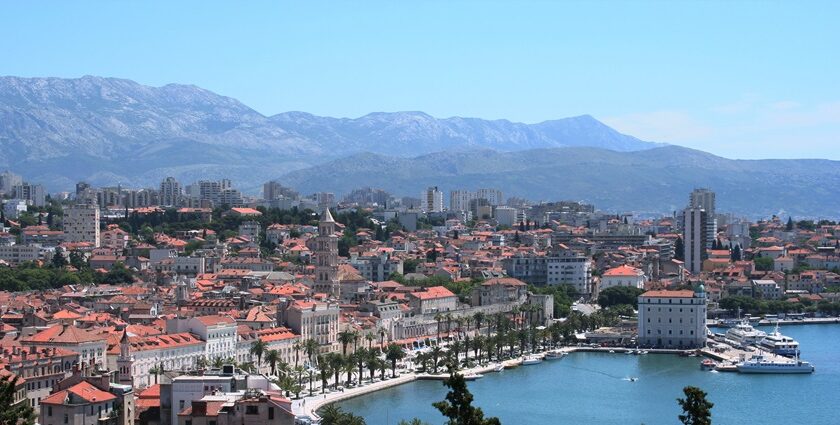Split is a beautiful city in Croatia, located on the Dalmatian Coast. It has lovely beaches, old buildings, and a lively culture. The city mixes history with modern life, making it a great place to visit. One of the most famous sites is Diocletian’s Palace, an ancient Roman building. You can also see amazing views of the Adriatic Sea. There are many things to do, like exploring old streets, enjoying nature, and tasting local food. Whether you love history, the sea, or good food, Split has something for everyone.
Location
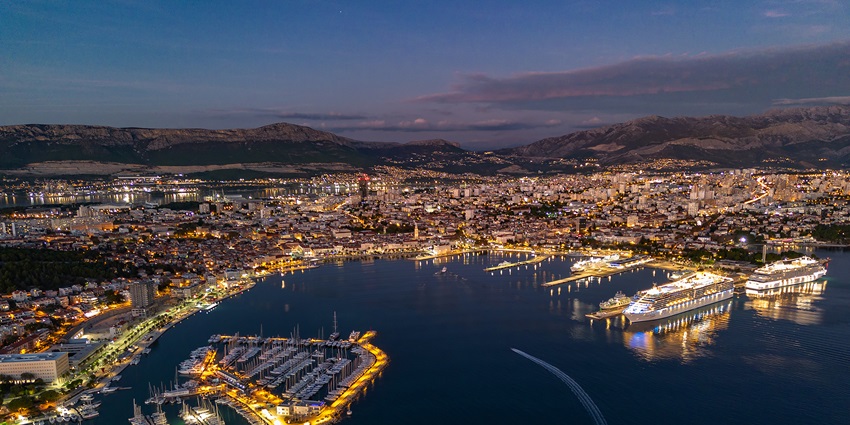
Photo: Ballota / Wikimedia Commons
It is a city on the east side of the Adriatic Sea in Croatia. It is the second biggest city in the country and an important place for travel to the Dalmatian islands. The city has a warm Mediterranean climate, with hot summers and mild winters, making it a great place to visit all year. It is surrounded by mountains on one side and the sea on the other, creating beautiful views.
History Of Split
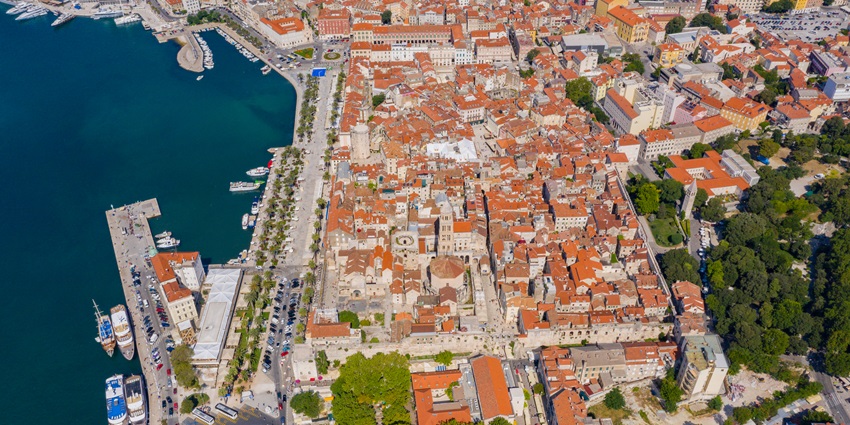
Photo: dronepicr / Wikimedia Commons
Split is a very old city with a history of over 1,700 years. It was started by the Roman Emperor Diocletian, who built a big palace there in 305 AD. Over time, people built homes and shops around the palace, and the city grew. The palace is still there today and is among the best old Roman buildings. In the past, It was ruled by the Byzantine Empire, the Venetians, and later by Austria-Hungary. It is a popular place for visitors, where people can see old buildings and enjoy the warm Mediterranean weather.
How To Reach
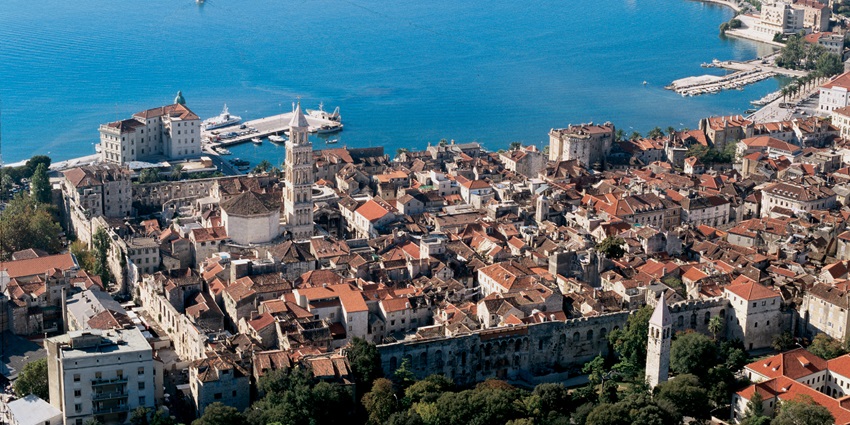
Photo: E.coli / Wikimedia Commons
Split is well connected by air, sea, and land, making it easy for travellers to reach.
By Air: The nearest airport to Split is Split Airport (SPU), also known as Resnik Airport. It is located about 24 km from the city centre. The airport has regular international flights from major European cities like London, Paris, and Berlin.
By Train: There are train connections to Split from Zagreb, the capital of Croatia. Although the train journey is slower than buses, it offers scenic countryside views.
By Road: Croatia has a well-maintained highway network, and Split is easily accessible by car or bus. The A1 motorway connects Split to other major cities like Dubrovnik and Zagreb. Regular bus services are available from nearby towns and international locations.
By Ferry: As a coastal city, Split has a busy ferry port connecting to islands like Hvar, Brač, and Vis. International ferry routes to Italy also make it a convenient travel option for tourists.
Places To Visit In Split
Here is a list of the best places to visit in Split, showcasing its history, coastal beauty, and lively atmosphere.
1. Diocletian’s Palace
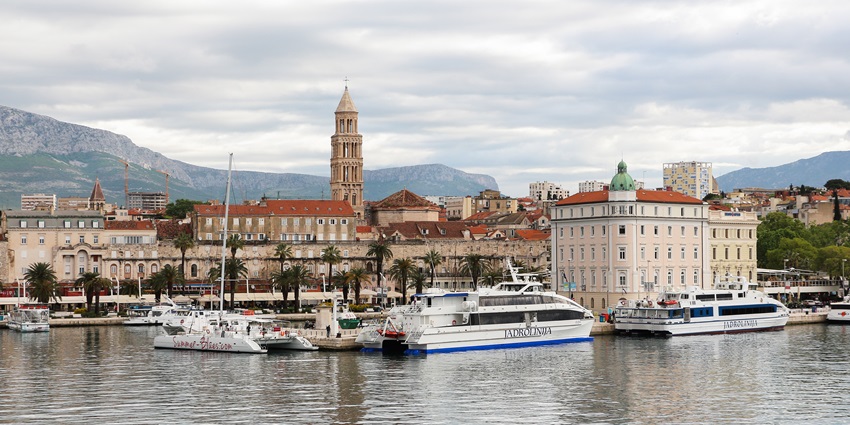
Photo: Bernard Gagnon / Wikimedia Commons
Diocletian’s Palace is a famous place in Split. It was built in the 4th century by the Roman Emperor Diocletian. This old palace is in the centre of the town and has ancient buildings, small stone streets, and lovely squares. People can walk through the underground rooms, visit Peristyle Square, and see the strong Roman walls. The palace is very old but still in good condition. It is also a UNESCO World Heritage Site, which makes it special. This is a great place for people who love history and want to see how the Romans lived many years ago.
Location: Croatia
Best Time To Visit: April to October
2. Riva Promenade

Photo: Joanbanjo / Wikimedia Commons
Riva Promenade is a lively place by the water. People come here to enjoy the sea and relax. It has tall palm trees, cafes, and restaurants where visitors can sit and enjoy the view. You can take a nice walk, drink coffee, or watch the sunset over the Adriatic Sea. The place is always full of life, and many events and celebrations happen here during the year. It is a great spot to feel the city’s atmosphere and have a peaceful time by the water. Many locals and tourists love to visit this beautiful promenade.
Location: Croatia
Best Time To Visit: April to October
3. Marjan Hill
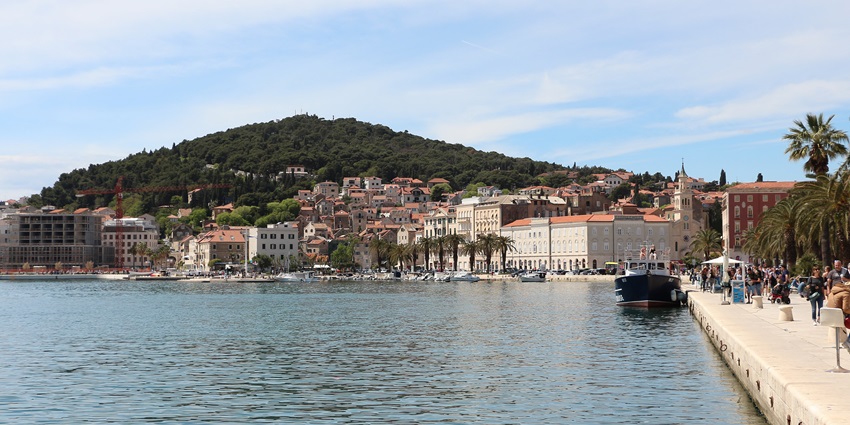
Photo: Bernard Gagnon / Wikimedia Commons
Marjan Hill is a quiet and green place away from the busy city. It has many walking and cycling paths where people can enjoy nature. There are also small chapels, caves, and picnic areas to explore. The hill has beautiful views of the city and the blue sea. If you walk to the top, you can see amazing sights of the nearby islands. It is a great place to take photos, relax, and enjoy fresh air. Marjan Hill is perfect for nature lovers who want a peaceful break from the city.
Location: Croatia
Best Time To Visit: March to October
4. Bacvice Beach
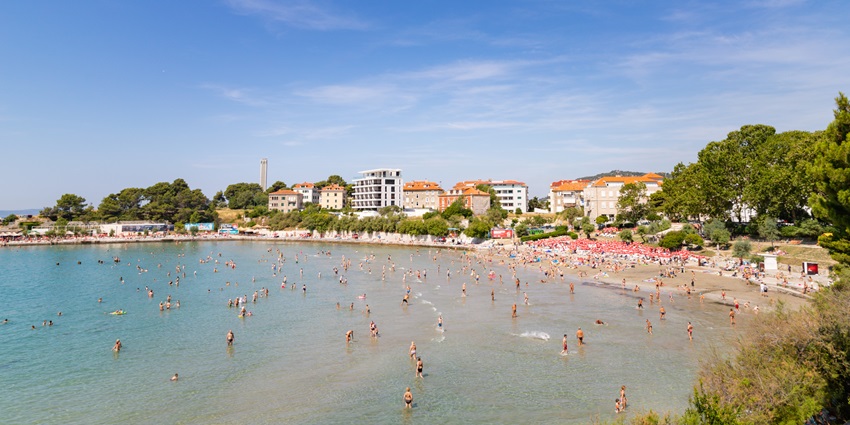
Photo: dronepicr / Wikimedia Commons
Split has a very famous beach called Bacvice Beach. It has soft sand and shallow water, making it perfect for swimming and relaxing. Many people like lying in the sun, swimming, and playing a local ball game called “Picigin.” The beach is busy during the day and also at night. There are many beach bars, restaurants, and nightclubs nearby. Families, couples, and people travelling alone all enjoy this place’s fun and peaceful feeling.
Location: Split, Croatia
Best Time To Visit: May to September
5. Cathedral of Saint Domnius
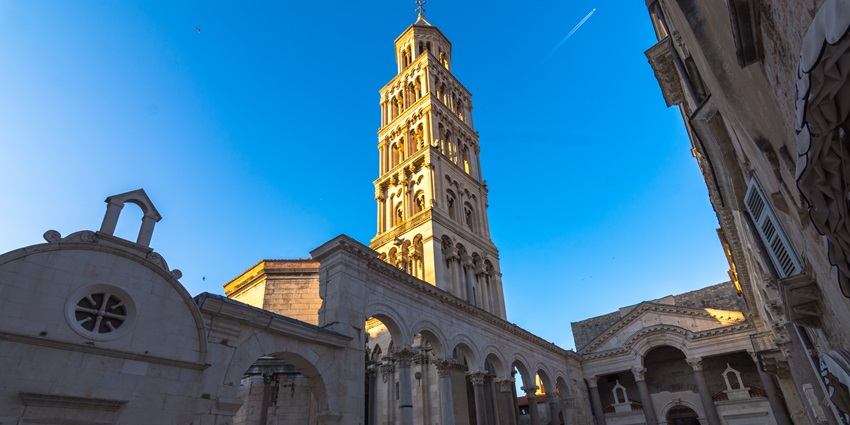
Photo: Mattias Hill / Wikimedia Commons
The Cathedral of Saint Domnius is a very old church in Split. It was first built in the 4th century as the burial place of Emperor Diocletian. Later, it became a church. The cathedral’s architecture blends Roman, Gothic, and Baroque elements, reflecting centuries of cultural influence. Its bell tower offers panoramic city views, while the interior features detailed carvings, religious relics, and ornate altars. As one of the oldest continuously used Catholic cathedrals, it remains an important site for history and art enthusiasts.
Location: Kraj Sv. Duje 5, 21000 Split, Croatia.
Best Time To Visit: April to October
Duration of Stay: 1 to 2 hours
Where To Stay

Photo: Pixabay / Pexels / Image For Representation Only
Split has a variety of places to stay, from budget-friendly guesthouses to high-end hotels. Villa Matejuska offers rustic-style apartments with free Wi-Fi and breakfast. House Sandra provides a comfortable stay with clean rooms and friendly service. The Old Town has hotels within walking distance of historic landmarks, while the coastal area features accommodations with Adriatic views. Many hotels offer modern amenities and easy access to restaurants and attractions, making it convenient for visitors to explore the city.
Where To Eat
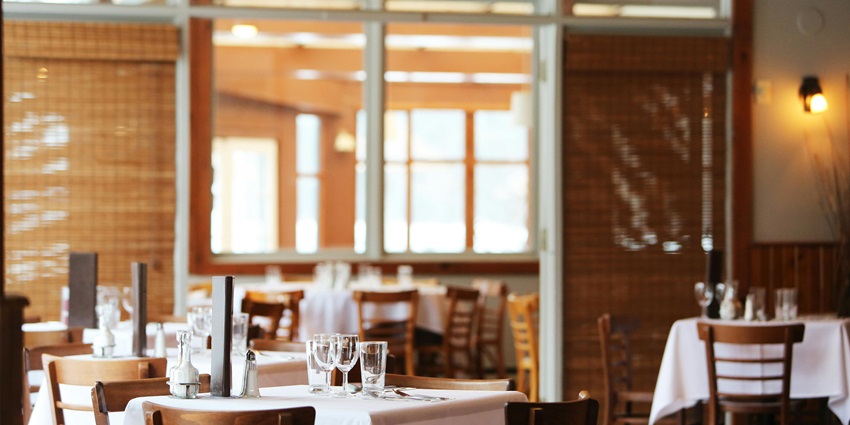
Photo: Life Of Pix / Pexels / Image For Representation Only
Split has a strong food culture with fresh seafood, local specialities, and Mediterranean flavours. The Varoš neighbourhood has family-run restaurants serving Dalmatian cuisine. Konoba Fetivi is known for seafood dishes, while Villa Spiza offers home-style meals made with seasonal ingredients. Matoni serves creative dishes combining local and international influences. Many restaurants focus on fresh, simple ingredients, with olive oil, herbs, and grilled meats being common in local recipes.
Best Time To Visit

Photo: dronepicr / Wikimedia Commons
The best time to visit Split is from May to September when the weather is warm, and the sea is perfect for swimming. Spring and autumn are also great times to visit, as the city is less crowded, and the temperatures are comfortable for sightseeing.
Other Factors To Consider
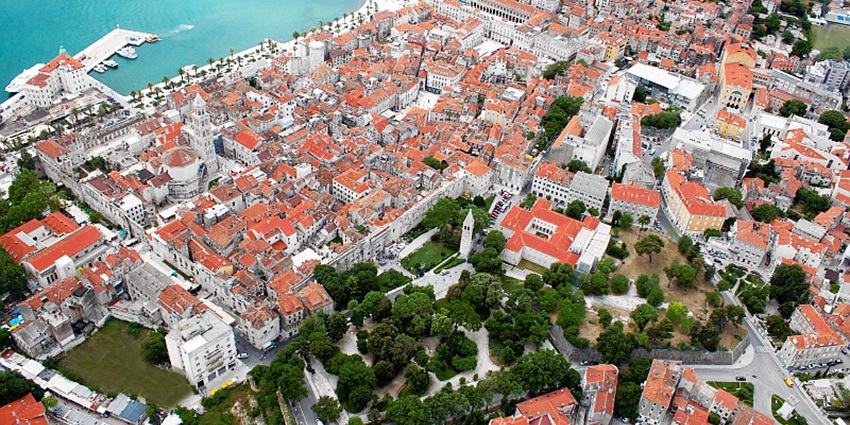
Photo: Ballota / Wikimedia Commons / Image For Representation Only
Average Trip Cost
The average trip cost to Split depends on your budget and travel style. Entry tickets for attractions like Diocletian’s Palace and Klis Fortress range from ₹500 to ₹1,500 per person. A guided tour of places like Riva Promenade or Marjan Hill costs around ₹2,000 to ₹5,000. Hotels suit all budgets, with budget options starting at ₹3,000 per night and higher-end stays costing more. Food is reasonably priced, allowing visitors to enjoy Croatian meals without overspending.
Tips For Travellers
- Dress modestly and be respectful when visiting religious or historical sites.
- It’s a good idea to book your accommodation early, especially if you’re visiting during peak season.
- Some historical sites, like the Diocletian’s Palace cellars, may restrict flash photography.
- Split is a pedestrian-friendly city with charming alleys, scenic viewpoints, and hidden gems.
- The sun can be strong, especially in summer. Wearing sunscreen, a hat, and sunglasses will help you stay comfortable.
Split is a beautiful city in Croatia with a mix of history, nature, and stunning beaches. You can explore ancient ruins, relax by the sea, and enjoy delicious local food. Whether you love history or just want to enjoy the coast, this city has something for everyone. Plan your trip now with TripXL and experience the best of Split in an easy and exciting way.
Cover Photo: Tatyana Peshkova / Wikimedia Commons


 WhatsApp
WhatsApp
 Twitter
Twitter
